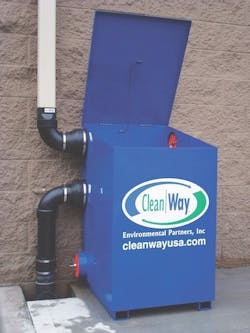Aircraft Services Meet Filtration Requirements
About the author:
Cleanway
www.cleanwayusa.com | 800.723.1373
Cleanway's client has a history of protecting life and property by fighting fires, performing low-impact logging, and providing disaster relief and reconstruction efforts around the world. Its core values are engineered to ensure employee health and safety and envi- ronmental stewardship, including:
- Complying with all applicable health, safety and environmental regu- lations and laws, and global HSE standards;
- Ensuring a non-punitive safety environment to encourage reporting of incidents, hazards and safety-related concerns;
- Acting to minimize the environmental impact of its activities; and
- Educating and motivating employees and contractors to conduct their activities in a safe and environmentally responsible manner.
Consistent adherence to these values is one of the reasons that the client has received awards for employer excellence from federal aviation authorities.
The facility in question was one of the client’s fleet maintenance and repair facilities. While the facility, at 3.898 acres and 51,000 sq ft, might be considered small by some standards, the combination of the fleet’s refuel- ing, chase and service vehicles, and associated fuels and cargo added complexity to identifying the pollutant source. When scheduled testing at two catch basin compliance points adjacent to the structure showed elevated zinc levels, the client’s legal department contacted CleanWay to order six downspout filtration devices.
After competitive analysis, it selected the downspout filtration system from CleanWay for its high-capacity design, “plug-and-play” installa- tion and ease of maintenance. Each downspout device was fitted with CleanWay’s patented MetalZorb filtration media packs.
After installation of the downspout filters, zinc levels immediately decreased. Specifically, zinc levels at Port II, Basin 3, decreased from 0.457 mg/L to below benchmark in November 2016. However, levels remained stubbornly above the 1200-Z permit benchmark at Port I, Basin 1. Testing was conducted downstream of the downspout filters at the two catch basins adjacent to the fleet maintenance structure. These two catch basins were the testing compliance points identified in the client’s Stormwater Pollution Prevention Plan, but with the structural change of added downspout filtration, CleanWay suggested testing at all filtration points.
In December 2016 and January 2017, the area experienced a historic cycle of freezing rain and snow followed by brief thaws. When the thaw arrived in early February 2017, the client’s storm water facility experi- enced unprecedented runoff and dramatically increased zinc levels at the catch basins—1.734 mg/L at Basin 3 and 1.397 mg/L at Basin 1.
The client immediately contacted an environmental consulting firm to identify the source of the excessive zinc runoff. On the recommendation of the environmental consulting firm, it commissioned the coating of all galvanized roof surfaces in May 2017; the excavation of collection points for improved sampling; and jetting and scoping of all storm water facility lines, which was performed by River City Environmental. CleanWay also “tuned” its downspout filtration media with specially blended filtration packs at each downspout filtration device incorporating MetalZorb media blended with biochar. All of this work was completed in late May 2017.
The test results after installation of the CleanWay downspout filtration devices and associated facility maintenance was 0.059mg/L for Port I, Basin 1, and 0.007 for Port II, Basin 3. The cost per square foot of the comprehensive program included:
- The initial downspout install was $0.24 per sq ft;
- The filter and media upgrade was $0.10 per sq ft;
- The power wash and roof painting was $0.49 per sq ft;
- Excavating sample locations was $0.14 per sq ft; and
- The storm water pipe flush was $0.02 per sq ft.
The total annual operating and maintenance cost per square foot of roof was $0.10.
